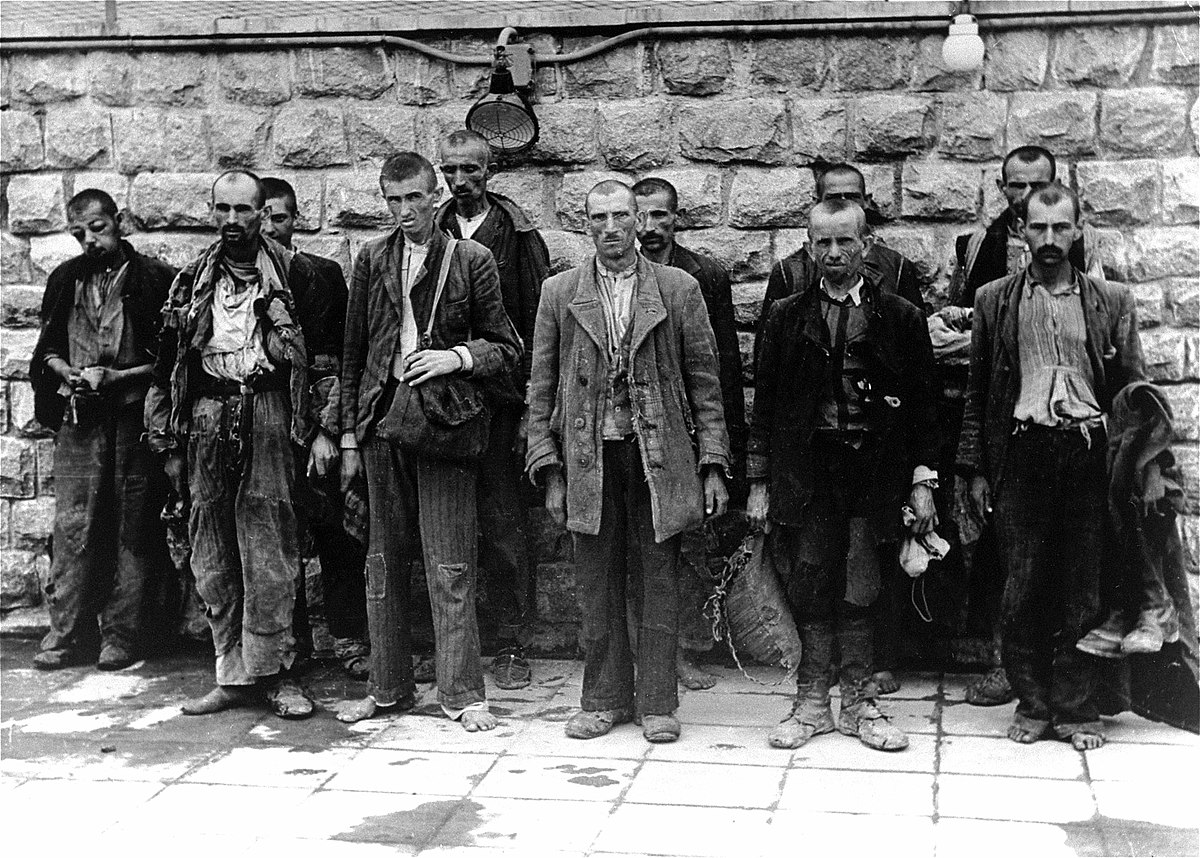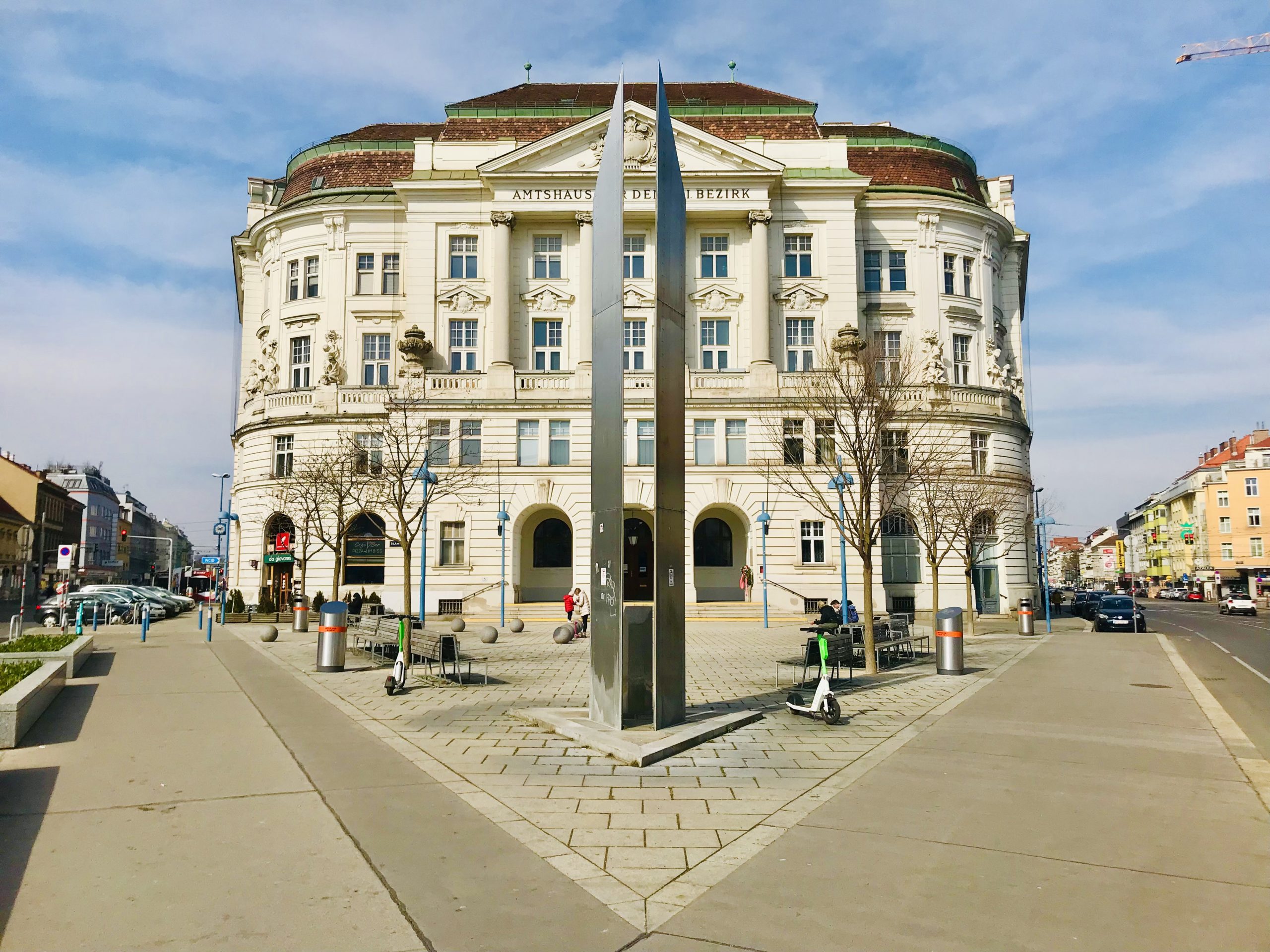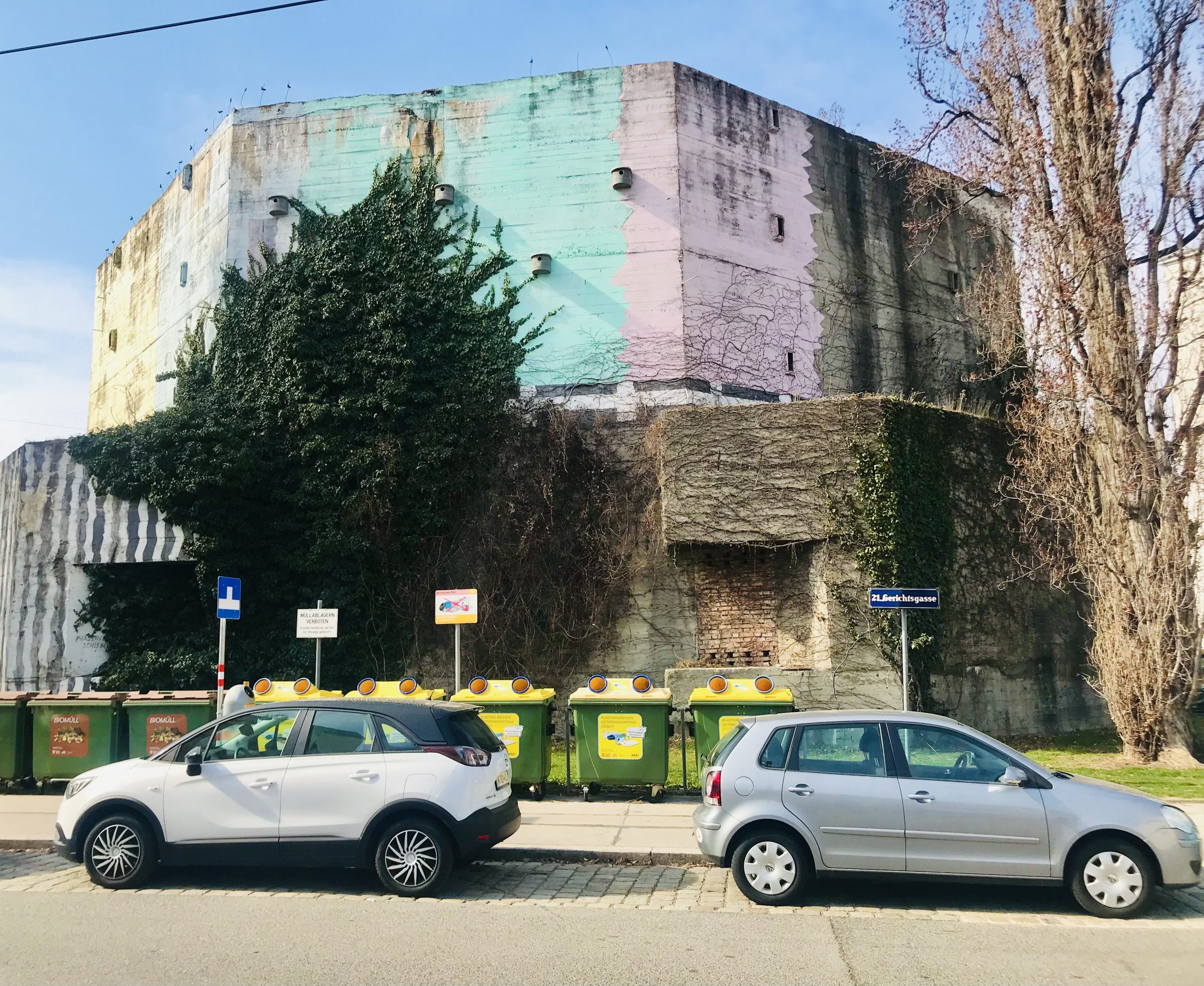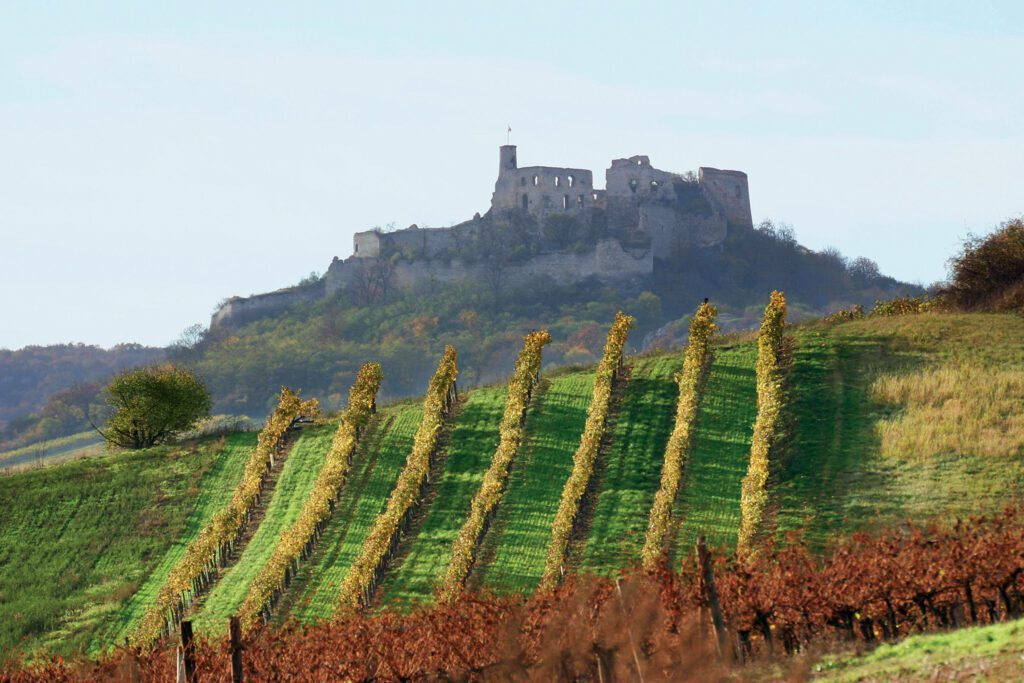
EXPLORE ONE OF THE MANY SCENIC HIKES AND WALKING TRAILS NEAR VIENNA
Table of Contents
- 1 TRAVEL GUIDE | EASY SCENIC HIKES NEAR VIENNA
- 2 GENERAL TRAIL RULES
- 3 1. THE TRIMMEL TRAIL (6.8 km/4.2 miles – Easy)
- 4 2. ENZERFELD WINE CELLAR TRAIL (3.5 km/2.2 miles – Easy/Moderate)
- 5 3. THE SUNKEN ROAD TRAIL (6.1 km/3.8 miles – Easy)
- 6 4. CASTLE FALKENSTEIN TRAIL ( 7.2 km/4.4 miles – Easy/Moderate)
- 7 NEAR THIS PLACE
- 8 BEST PLACES TO STAY
- 9
Cooped up inside and looking to get out of the city and explore the countryside? Maybe take your dog for a walk? We don’t blame you. Just an hour outside of Vienna (or Wien in German) is a different world. Important — wein means wine. If you haven’t explored the Weinviertel region of Lower Austria, then you are truly missing out. Here are several easy hikes near Vienna that you won’t want to miss.
The Weinviertel is the wine region to the north and east of Vienna. It is largely defined by its vineyards, rolling hills, and sweeping views. It also has some of the best hikes and walking trails near Vienna. The countryside is sprinkled with castle ruins and is punctuated by its Dorfs or small farming villages. While you are enjoying nature, these small towns are great places to pick up local products. The farmers typically sell their honey, wine, fresh fruits, and vegetables at roadside stands where you pay using the honor system.
In addition to the network of roads connecting each of the Dorfs, there is a separate network of trails and paths for hiking. We have compiled a list of the most scenic hiking and walking trails near Vienna in Lower Austria. We affectionately refer to Lower Austria as “Slower Austria.”
Hanging out in the city is fun. If you want to take in some great scenery then explore some of these easy hikes and trails near Vienna. By the way, these are all off the beaten path. Read on!
TRAVEL GUIDE | EASY SCENIC HIKES NEAR VIENNA
GENERAL TRAIL RULES
Before we get started, let’s go over a couple of ground rules. Hiking is a bit of an art form in Austria and is something the locals are very passionate about. For our American readers, you will notice other hikers holding ski poles and flailing their arms about. Do not be concerned, these are called Nordic walking sticks and are meant to help exercise your upper body.
Be warned, Austrians are rule followers and will dress you down in a New York minute if you are not conforming to the rules of the trail. So, try to follow the signage and stay on the designated trail. If you go off-trail, the perception is that you are destroying nature. Never, ever, ever hike across the farmer’s field (again under penalty of death)!
If the trail is congested, stay on your side (to the right). Complete strangers will scold you, especially if your dog is off the leash. At a bare minimum, you’ll receive dirty looks and some strange hand gestures. If you do not clean up after your dog, you could face the death penalty! Actually, there is a EUR 50.00 fine. Do not litter ever, under any circumstances. I told you they followed the rules here.
Oh yeah, one last thing. Some of these trails are impossible to find and when I say impossible, I mean impossible. Since we like you, each trail has a hyperlink that will open up the starting point in Google Maps. Now, are you ready to have some fun and enjoy some scenic hikes near Vienna?
1. THE TRIMMEL TRAIL (6.8 km/4.2 miles – Easy)
Just a few miles away from the city center and you are transported to a completely different world of endless farm fields, jackrabbits, and deer. This is one of the best rural hikes near Vienna. It starts in the small farming village of Gerasdorf bei Wien. This hike is dog friendly.
A FARMING COMMUNITY
The starting point is just past the Bauernladen Trimmel, one of the region’s best farmer markets for fresh fruits and vegetables. Trimmel specializes in locally grown weißer spargel (white asparagus) and erdbeeren (strawberries). The best part about Trimmel is that they are open on Sunday. Okay, now back to our hike.
Just north of Trimmel, you will cross over the Marchfeld Canal and go up a hill. At the top of the hill, on your left is Salzstraße, our starting point. This hike takes place in the farm fields between Seyringer Straße, Salzstraße, and Urberngasse.
AWESOME WILDLIFE
You should definitely hike this route in the morning or around dinner time, as there is a good chance you will see herds of deer or a fluffle of jackrabbits. (Yes, that’s correct a group of jackrabbits is called a fluffle.) The jackrabbits are so enormous that at a distance, you could easily confuse them for deer!
Continue along Salzstraße until you reach the vigil statue on your right. Turn right and continue along the gravel path (which also doubles as the Gerasdorf bike trail). At the next decision point, turn right. Continue about 100 meters and then turn left at the forested lane (the Gerasdorf bike trail). Continue until reaching the next decision point.
Turn left and you will continue along what appears to be a dirt trail through a wooded area. Continue straight along this route for some time until reaching the next path on your right. You should see a neighborhood in front of you. Turn right and continue along the path through the farm field until reaching a decision point. Turn right again and then stairstep your way back to the dirt path through the wooded area. Now retrace your steps back to the starting point.
We hope you enjoyed this easy hike near Vienna and were able to see lots of wildlife.
DIRECTIONS
Click the Green/Red icons below to open the START and END POINTS in Google Maps. You will START/END in the same location.
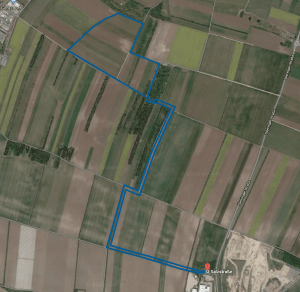 Google Maps 2020
Google Maps 2020
2. ENZERFELD WINE CELLAR TRAIL (3.5 km/2.2 miles – Easy/Moderate)
If you like scenery, this is one of the best hikes near Vienna. This amazing wine cellar road and vineyard hike are located in the small farming village of Enzerfeld. Although the vast majority of this hike is flat and easy, the first part of the hike is uphill.
This trail really has it all including an ancient cobblestone alley with wine cellars, quaint wine press houses on a country road, vineyards, tree-lined roads, and a panoramic view of Vienna. An added benefit, there are three fine Buschenschanken nearby so you can enjoy some food and drink after your hike. This hike is dog friendly.
WHAT IS A BUSCHENSCHANK?
Before we get into the details of our hike, what exactly is a Buschenschank? Simply put, they are rustic, inn-like places with one or two rooms and a garden, run by a local winegrower. (Similar in many ways, a heurige is a larger-scale version.) The name Buschenschank refers to the traditional bundle of twigs (Buschen) that can be found at the entrance. The bundle signals that the Buschenschank is open, welcoming people to enter.
Enacted in 1784 by Emperor Franz Joseph II, a special law permits farmers to sell and distribute their own seasonal food, wine, and produce at a price they determine (without paying taxes). All of the food at a Buschenschank must be produced regionally. Okay, now back to our hike.
As you depart the starting point on Schüllerkeller, you will head uphill slightly along the Kellergasse (wine road). You will be surrounded by 18th-century wine cellars, many of them built into the hillside. You will also find an interesting assortment of wine press houses, each with its own unique door. At the end of this cobblestone road, you will turn right onto Fürstenbergkeller, a longer road chock full of colorful wine press houses.
WHAT IS A PRESS HOUSE?
Historically speaking, farmers used these pressing houses to “press” their grapes and for wine production. Wine cellars were also used for pressing; however, were generally used for storage given their consistent temperature, humidity, and shade. Hike to the end of Fürstenbergkeller and you will see a path leading up the hill that goes through the forest. Continue up the path. At the top of the path, you will enter a vineyard on a sloped hill. Continue straight up the hill through the vineyard to the tree line. This is it for hills — the remainder of the route will be mostly flat.
At the top of the hill, turn left and continue walking. Before doing that, stop and turn around. You will enjoy a gorgeous view of the city of Vienna. Now, continue along the dirt path through the vineyard (paralleling the tree line). You will come to a fork in the road. Stay to the left and you will go down a slight slope and find a tractor path. Continue along the gravel road until it ends at the forest and runs into Waldkeller, which is a paved road.
Turn right and continue uphill slightly along Waldkeller. There will be a vineyard on your right-hand side. At the top of the hill (at the end of the vineyard) turn right onto another tractor path. As you continue, the forest will be on your left and the vineyard will be to your right. The tractor path through the grass will eventually turn into a gravel road. Continue for a good distance until you encounter a hardened road and can go no further. Turn right on the hardened road and continue downhill. You should see Vienna in the distance.
Before reaching the bottom of the hill and the main road (Route L3109 aka Enzerfeldstraße), you will see a sign on your right with a strange u-turn arrow. You will also see a footpath on your right that cuts through the small field. Take this footpath. If you get confused or completely miss the footpath and the u-turn sign, all is not lost. Continue to the main road (L3109) and turn right. Walk along L3109 for about 30 meters (100 feet) and then take your first right onto Satzkeller. Satzkeller is a paved secondary road.
Continue along Satzkeller until you reach more wine press houses. They will be on your right. Walk along Satzkeller until you reach a slight fork in the road. Stay to the left and remain on Satzkeller. You will eventually reach the end of the road and find yourself on Schüllerkeller and back at your starting point.
After your hike, kick back with a relaxing meal and adult beverages at one of the following quaint Buschenschanken near the starting point. By the way, these are among the most charming Buschenschank in the region. You will, however, need cash! They do not accept credit cards.
We hope you enjoyed this scenic hike near Vienna and were able to take in some of the lovely views and explore the kellergasse (wine cellar road)!
Click on the addresses below to get directions in Google Maps.
Buschenschank Praschinger. ADDRESS: 2202 Enzersfeld im Weinviertel, Neustiftkeller 3, Lower Austria.
Buschenschank Josef und Eveline Eichberger. ADDRESS: Aukeller 6, 2202 Enzersfeld im Weinviertel, Lower Austria.
Buschenschank Laimgstätten 17. ADDRESS: Laingstetten-Keller 17, 2202 Enzerfeld im Weinviertel, Lower Austria.
DIRECTIONS
Click the Green/Red icons below to open the START and END POINTS in Google Maps. You will START/END in the same location.
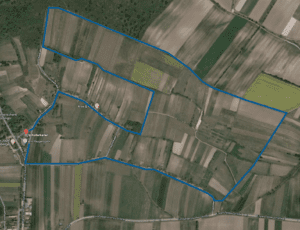 Google Maps 2020
Google Maps 2020
3. THE SUNKEN ROAD TRAIL (6.1 km/3.8 miles – Easy)
This is one of the more interesting hikes near Vienna. It is located off the beaten path near Vienna in the countryside in the small farming village of Mahartsbrunn. This is one of those places you would really have to put a lot of effort into finding. Although very much “away from it all,” on a clear day there are nice views of Vienna far off in the distance. This hike is dog friendly.
We enjoy this hike for several reasons.
- It is very much a country hike — you will have the path to yourself, and the scenery is incredible.
- In April, the fields have the incredible yellow glow of the rapeseed plants.
The starting point is at the top of a hill on a country road named Zum Alten Hof which roughly translates in English into “to the old courtyard.” As an added bonus, Zum Alten Hof is also an old wine cellar road (or kellergasse). After admiring some of the neat architecture, walk along the gravel road down the hill on Zum Alten Hof until you reach the forest. Just before the forest, take the dirt path to your right and follow the yellow sign that says “Wolkersdorf Puzzle.”
WOLKERSDORF PUZZLE
Before we carry on any further, the Wolkersdorf Puzzle is a ginormous series of interconnecting paths through the farm fields in this region. Unless you speak German, you will never know about it.
Continue along the dirt path with the forest on your left until you reach a bend in the path. You should pass some beehives along the way on your left. Follow the bend to the right and continue until you hit a fork in the road. At the fork, take the path on your left and continue down a slight hill.
In April this is the heart of the rapeseed plants. Their vibrant yellow color is absolutely spectacular. You will also find deer frolicking about in the fields. Continue for some time along this path until you reach a T intersection. At the T, turn left and continue along the dirt path.
THE SUNKEN ROAD
This path will descend down below the fields and vineyards and become a sunken road called Grasenberg. Think about this — this road has been traveled so many times that it has “sunk” below the surface.
You will eventually emerge from the sunken road. The dirt path will begin to turn into a paved road. At this point, take your first left and continue uphill. You will walk uphill for some distance until you reach another fork. Stay to the left and continue. Continue straight until you reach a tree line and then turn left. Follow this path along the tree line and then take your first right. This will take you back to your initial route. At the next fork in the road, take a left and retrace your steps back to the starting point.
We hope you enjoyed this easy hike near Vienna and were able to catch the amazing views!
DIRECTIONS
Click the Green/Red icons below to open the START and END POINTS in Google Maps. You will START/END in the same location.
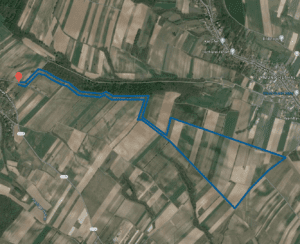 Google Maps 2020
Google Maps 2020
4. CASTLE FALKENSTEIN TRAIL ( 7.2 km/4.4 miles – Easy/Moderate)
Out of all the scenic hikes near Vienna, this one is our favorite. Everything about this trail is spectacular. Falkenstein bei Poysdorf is an ancient medieval town close to the Czech border. Although in Austria, it feels like the Cotswalds in the English countryside. You are greeted by the 13th century Castle Falkenstein perched above a hilltop. The shining white Castle Mikulov is off in the distance. The quaint town of Falkenstein, a town with incredible character, is surrounded by vineyards and forest. This hike is dog friendly.
The starting point is on the corner of Marktstraße and Kirchenhgasse in the center of town. Your next stop is the Kellergasse, just a few streets over. Take your time passing through as this kellergasse is one of the prettiest in Austria.
You will encounter a wine cellar dug into the hillside reminiscent of Bilbo Baggins’ Hobbit Hole in Peter Jackson’s The Hobbit. Stay to the right and continue up the hill. You will next be greeted by vineyards galore and have a sweeping view of the countryside, Castle Falkenstein and Castle Mikulov.
Continue until you reach a wooded area on your right and a dirt trail on your left that goes to the top of the hill. Take the trail on your left and continue uphill. At the top of the hill, there is a statue of the crucifixion and a picnic table, continue until you begin to descend and reach a T junction. The forest will be in front of you. Turn left onto the dirt path until you quickly reach a four-way intersection. Turn right and continue along the path into the forest.
You will encounter a side trail, stay to the left. You will continue downhill and then turn right. This path will take you uphill along a dirt trail through the forest. Continue along this trail until you come to the road. Cross the road (L23/Dörfl) and continue along the path in front of you. Eventually, you will reach a national forest. There will be a clearing and a religious monument in front of you, turn right.
Pass through/around/under the gate and continue downhill. You will be greeted by Castle Falkenstein and the scenery will open up all around you. As you approach the Castle (which is on the hill in front of you), turn right onto the dirt trail that passes through the fields and continue downhill towards the town. You will exit onto Marktgasse and be back at your starting point. When you are done, wander back to the Kellergasse for a drink or explore the small town.
Wasn’t that incredible? This scenic hike near Vienna is one of our favorites.
DIRECTIONS
Click the Green/Red icons below to open the START and END POINTS in Google Maps. You will START/END in the same location.
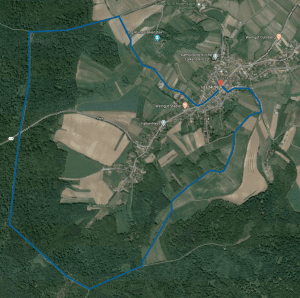 Google Maps 2020
Google Maps 2020
NEAR THIS PLACE
HAGENBRUNN: VINTNERS, VINEYARDS, AND HEURIGE. Hagenbrunn, an entire village of vintners, vineyards, and heurige east of the Danube. Enjoy a great day out at this off the beaten path location.
VIENNA WINE TOUR AND HIKING DAY. The Vienna wine trails, an annual scavenger hunt for oenophiles in the scenic city outskirts. Enjoy a glass of wine, as you walk from vineyard to vineyard.
TRAVEL GUIDE | RETZ UNDERGROUND WINE CELLARS. Retz has a beautiful medieval square and the largest and most extensive network of underground wine cellars in Central Europe.
GALGENBERG WINE CELLAR ROAD. Welcome to the Wine Cellar Road of Galgenberg with over 180 wine cellar houses built into the scenic countryside. Walk, bicycle or jog and enjoy.
SCENIC DRIVE IN AUSTRIA. Rolling hills, blissful meadows, and majestic mountain views make this gorgeous scenic drive in Lower Austria an absolute must.
VOICEMAP | VIENNA SELF GUIDED WALKING TOUR. Want to learn how the Mossad operation to bring Nazis like Adolf Eichmann to justice originated in Vienna? Check out our VoiceMap self guided walking tour: VIENNA + THE HOLOCAUST: FROM TRAGEDY TO JUSTICE. You can preview it for FREE. Start point is Nestroyplatz on the U1 red line in the 2nd District.
BEST PLACES TO STAY
SO/ VIENNA. Designed by the famous architect Jean Nouvel, this stylish hotel is near all of the sites. Panoramic views over Vienna, a gourmet restaurant, a gym, and FREE spa facilities. Modern, spacious rooms with air conditioning, FREE mini-bar, and FREE Wifi. ADDRESS: Praterstraße 1, 02. Leopoldstadt, 1020 Vienna, Austria.
RUBY LISSI HOTEL VIENNA. Boutique hotel located in an 18th-century building in Vienna’s first district. Luxuriously furnished rooms with air conditioning, wooden floors, use of tablet device and FREE Wifi. Each room has a Marshall amplifier and guitars can be rented. Organic breakfast and 24/7 access to Italian antipasti and snacks, beverages and selected wines. ADDRESS: Fleischmarkt 19 / Laurenzerberg 2, 01. Innere Stadt, 1010 Vienna, Austria.
GRAND FERDINAND VIENNA. Opened in autumn 2015, located on the Ringstraße boulevard in the center of Vienna. Modern spacious rooms with air conditioning. Rooftop pool, 3 restaurants, fitness center, and FREE Wifi. ADDRESS: Schubertring 10-12, 01. Innere Stadt, 1010 Vienna, Austria.
LE MERIDIEN VIENNA. Located on the Ringstraße in the heart of Vienna. Modern, spacious rooms with amenities. Indoor pool, spa facilities, fitness center, FREE mini-bar, and FREE Wifi. ADDRESS: Robert-Stolz-Platz 1, 01. Innere Stadt, 1010 Vienna, Austria.
DO&CO HOTEL VIENNA. Steps away from St. Stephen’s Cathedral in the heart of Vienna, this elegant hotel features spacious and stylish rooms with modern furnishings, wooden floors, air conditioning, and FREE Wifi. FREE use of neighborhood fitness center. ADDRESS: Stephansplatz 12, 01. Innere Stadt, 1010 Vienna, Austria.
![]()





